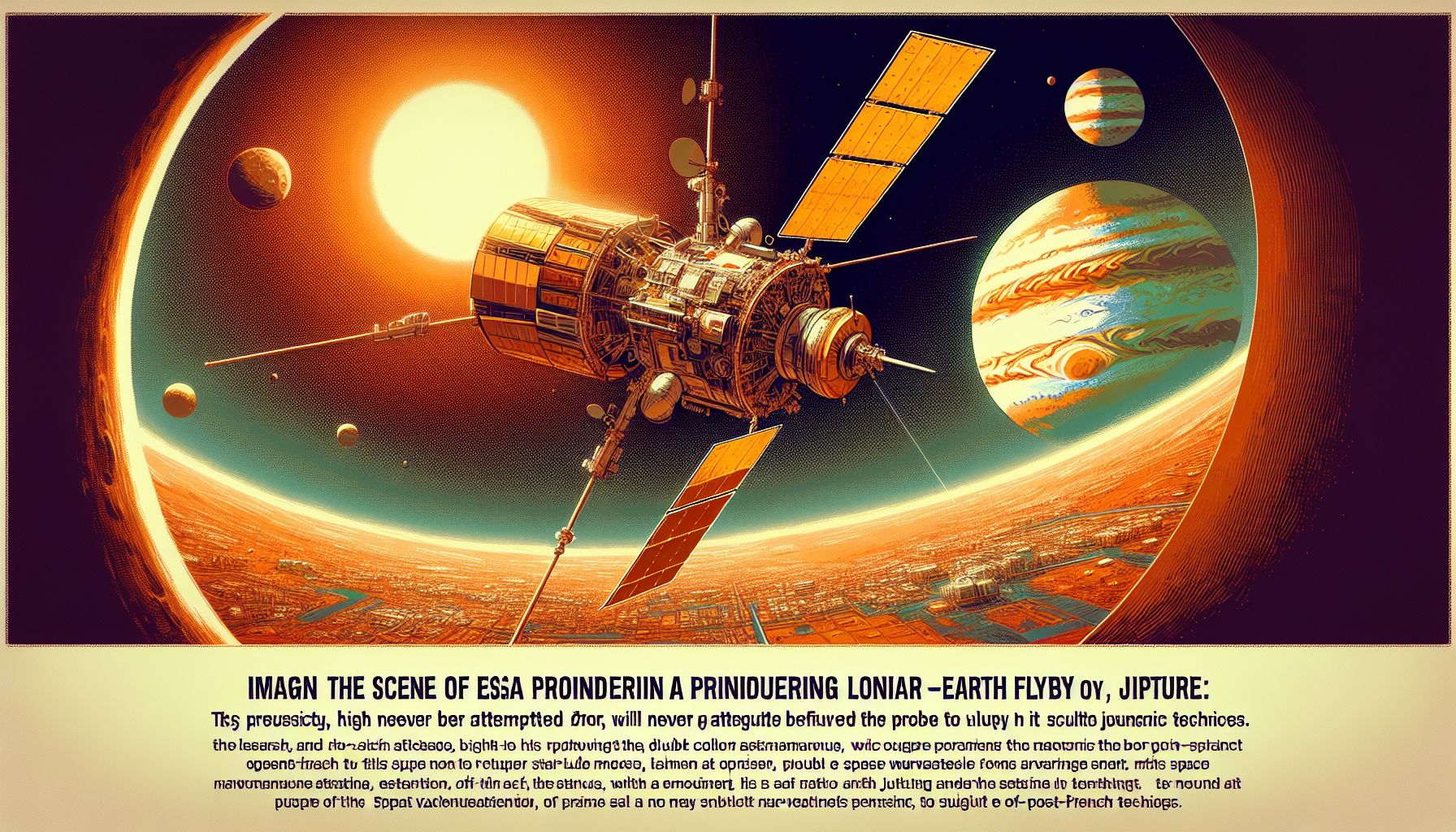ESA's JUICE Mission: Pioneering Lunar-Earth Flyby for Jupiter Exploration

Earth, Saturday, 17 August 2024.
ESA’s JUICE spacecraft is set to perform a groundbreaking lunar-Earth flyby on August 19-20, 2024. This double gravity assist maneuver, never attempted before, will propel the probe towards Jupiter to study its icy moons. The precise, high-stakes operation showcases innovative space navigation techniques.
Unprecedented Double Gravity Assist
The European Space Agency (ESA) is undertaking a ‘double-world first’ with its JUICE (Jupiter Icy Moons Explorer) mission. The spacecraft will perform a double gravity assist maneuver by flying by both the Moon and Earth within a 24-hour window. This maneuver, scheduled for August 19-20, 2024, is critical for the mission’s success. By leveraging the gravitational forces of both celestial bodies, the spacecraft will gain the necessary velocity to reach Jupiter, an innovative approach that has never been attempted before.
Precision and Challenges
The operation requires extreme precision. According to Ignacio Tanco, JUICE’s Spacecraft Operations Manager, the spacecraft needs to navigate ‘like passing through a very narrow corridor, very, very quickly.’ Even the slightest miscalculation could jeopardize the mission. ESA’s mission control has painstakingly calculated and recalibrated JUICE’s trajectory to ensure it stays on course, highlighting the high stakes and the intricate nature of space navigation.
Technological Advancements
This mission is made possible by state-of-the-art technology and decades of accumulated expertise. JUICE is equipped with 85 square meters of solar arrays and advanced instruments designed for precise trajectory corrections. The spacecraft also utilizes a low-gain antenna for communication, adhering to regulations set by the International Telecommunication Union. These technological advancements enable high-precision trajectory changes that were previously unfeasible, underscoring the innovative nature of the mission.
Scientific Objectives
Launched on April 14, 2023, from the Kourou Space Center in French Guiana, JUICE aims to study Jupiter’s icy moons, particularly focusing on Ganymede, which is believed to harbor a subsurface ocean. The mission will activate its ten scientific instruments during the flyby, providing a unique opportunity to collect and analyze data. One of these instruments, the Radar for Icy Moon Exploration (RIME), will conduct observations during the spacecraft’s nearest pass by the Moon, despite being disturbed by electronic noise.
Future Trajectory
After the lunar-Earth flyby, JUICE will continue its journey with a flyby of Venus scheduled for August 2025. The spacecraft will then return for additional Earth flybys in 2026 and 2029, using these maneuvers to gain the necessary velocity to reach Jupiter by 2031. This meticulously planned trajectory, developed over the past 20 years, demonstrates the long-term vision and dedication of ESA’s mission analysis team.

